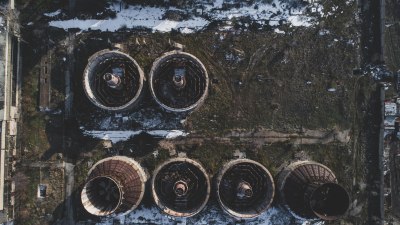The Ghost Town That Refused to Die in Pripyat, Ukraine
Explore Pripyat, the haunting ghost town near Chernobyl, its history, and resilience.

In the northern part of Ukraine lies the notorious ghost town of Pripyat, a once-thriving city established to support the Chernobyl Nuclear Power Plant. Abandoned in 1986, after the catastrophic nuclear disaster, Pripyat has remained largely untouched, embodying a haunting glimpse into a world frozen in time. The story of Pripyat is not just one of tragic loss; it is also a testament to resilience and the poignant lessons learned from the disaster. This article delves into the history, the aftermath of the Chernobyl disaster, and what remains of Pripyat today.
The Foundation of Pripyat
Pripyat was founded in 1970, just a few kilometers from the Chernobyl Nuclear Power Plant. It was constructed for the workers of the plant and their families, quickly becoming home to nearly 50,000 people. The city was designed to embody the ideals of Soviet progress, featuring modern housing, schools, and recreational areas. Pripyat was a bustling hub of activity, having a vibrant community complete with theaters, amusement parks, and sports facilities. However, this idyllic life was shattered when the disaster struck in April 1986.
The Chernobyl Disaster
On April 26, 1986, reactor number four at the Chernobyl Nuclear Power Plant exploded during a late-night safety test. The explosion released a large amount of radioactive particles into the atmosphere, spreading over much of Europe. The evacuation of Pripyat was initiated 36 hours after the incident; residents were given just a few hours to gather their belongings before being escorted away from their homes. Although the evacuation was supposed to be temporary, the residents of Pripyat would never return home, as the city soon became a radiological exclusion zone.
Life in a Ghost Town
The immediate aftermath of the disaster saw military and emergency workers rushing to contain the radiation leak and mitigate its effects. The once-bustling streets of Pripyat became deserted, filled only with echoes of the lives that once thrived there. Nature began claiming the ruins, with trees and vegetation overtaking abandoned buildings. The iconic Ferris wheel, meant for the city's May Day celebrations, stands still, rusting and overgrown but still a potent symbol of the tragedy.
Lesson in Resilience
Over the decades, Pripyat has been a focal point of investigation, tourism, and research. The area serves as a stark reminder of the risks associated with nuclear energy, highlighting the importance of safety and preparedness in engineering and operational protocols. The exclusion zone around Chernobyl is one of the most studied sites in terms of ecological recovery from nuclear contamination.
Pripyat Today
Today, Pripyat is part of a larger exclusion zone that covers approximately 30 kilometers around Chernobyl. Although it remains uninhabited, the ghost town sees thousands of visitors each year who come to witness its eerie beauty and learn about the tragic events. Tour companies offer guided tours that expose visitors to the haunting remnants of the city and educate them about the implications of the nuclear disaster.
The Return of Nature
Intriguingly, nature has made a remarkable comeback in the Chernobyl exclusion zone. Wildlife, including wolves, bears, and even rare species, have begun to flourish in an area once deemed uninhabitable. The contrast between destruction and nature's reclamation serves as a powerful symbol of resilience. Scientists and conservationists are studying the area to understand how ecosystems recover from such catastrophic events.
Revisiting a Lost Community
For many visitors, Pripyat represents more than just a ghost town; it is a profound reminder of personal stories and lives interrupted. The photographs of abandoned homes, schools, and playgrounds tell stories of the families who once lived there. Many emotional accounts are shared by those who were evacuated and have since visited their former homes, searching for closure in a place that resonates with memories but harbors only silence.
The Future of Pripyat
With advances in radiation safety and containment, discussions about the future of Pripyat and the surrounding zones are ongoing. Some advocates call for memorialization efforts to honor the lives lost while ensuring that the lessons learned from the Chernobyl disaster are never forgotten. As more people visit, the idea is to balance tourism with the sensitivity required to respect the solemn history of the area.
Pripyat stands as a testament to both human error and the resilience of nature. The ghost town, frozen in time, invites reflection on the balance of technological advancements with the inherent risks they embody. As the world continues to grapple with the implications of energy production and environmental stewardship, Pripyat remains a powerful symbol of the lessons learned from the past. With every visitor who steps into the haunting remnants of the city, the legend of Pripyat serves as a reminder of not just what was lost, but also what can endure through nature's indomitable spirit.











